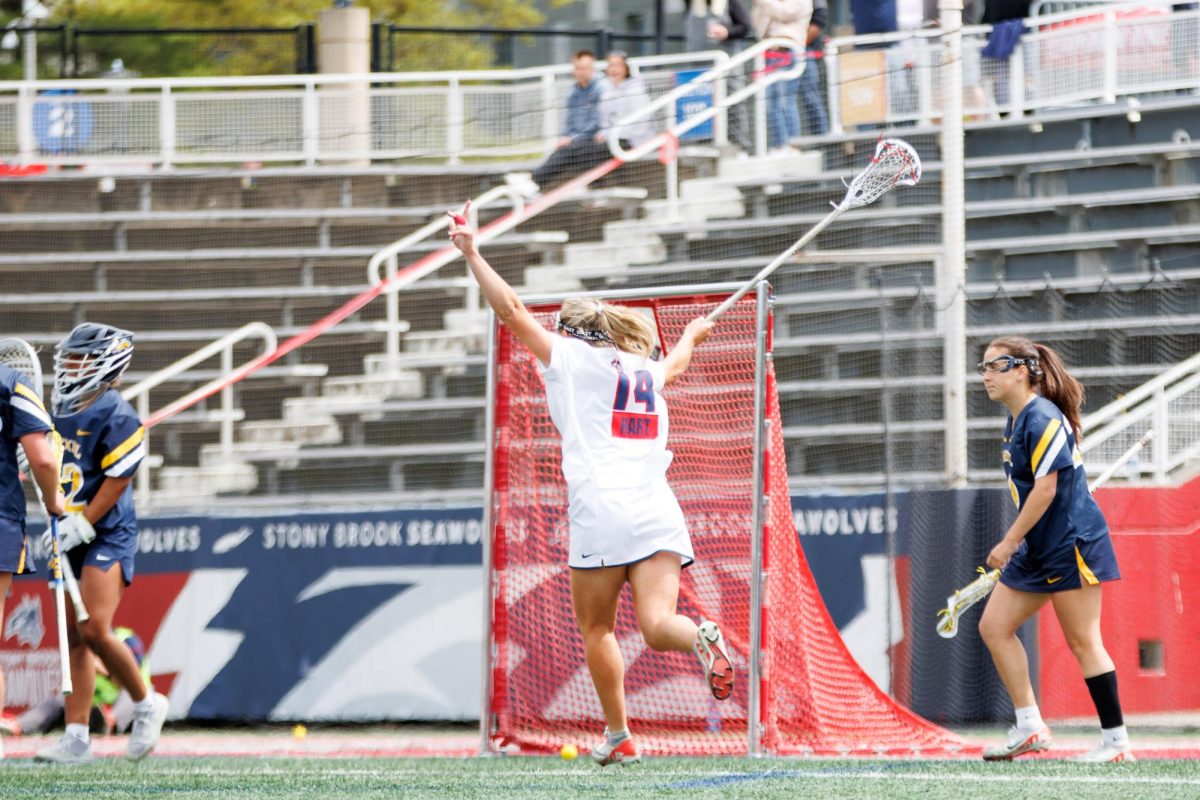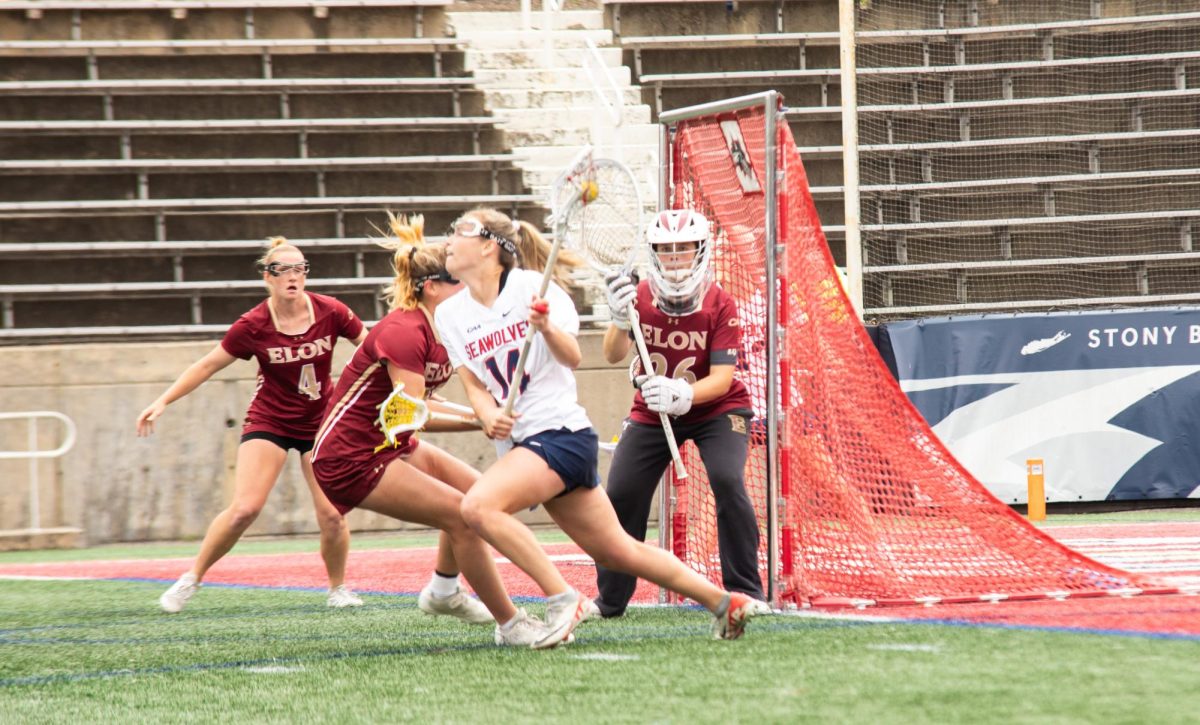Unlike Cory Matthews and Topanga Lawrence in “Boy Meets World,” when you walk into your first college class, chances are your favorite teacher from high school won’t be your professor, and there will definitely be more than seven students in the room.
Even though we’d all love to have Mr. Feeny and know the first name of every one of our classmates, the reality is far different than the pretty picture painted in our favorite childhood shows. In your first week of classes at Stony Brook, you will probably be introduced to at least one of the large lecture halls on campus.
In these rooms, you could have more than 500 classmates. These lecture halls are the ideal places to house some of the most popular introductory classes Stony Brook has to offer.
PSY 103 – Introduction to Psychology
Since its inception in 1965, the Psychology department at Stony Brook University has been one of the largest undergraduate departments. It’s no surprise that the introductory course attracts hundreds of students each semester. Introduction to Psychology, or PSY 103, also fulfills a Diversified Education Curriculum, or DEC F, requirement.

“It’s sort of fun to find out what the current knowledge is and see if you get any understanding of the things you do,” said Nancy Franklin, a psychology professor who teaches PSY 103. “I think that people tend to make a mistake that they think it’s going to be easy. I think a lot of people get a rude awakening of what a science psychology really is.”
According to Franklin, who has taught the course for 22 years, Introduction to Psychology is the study of human behavior, processing information, relationships and so much more.
“Psychology is very closely aligned with neuroscience,” Franklin said. “A lot of things that people intuitively think are wrong. A lot of psychology is universal. It’s a diverse group of 570 people. It makes it kind of interesting.”
Cynthia Jones, a 21-year-old psychology major, took PSY 103 with Professor Anne Moyer.
“I like that because the class was an introductory course, it gave brief descriptions about other specific fields of psychology,” Jones said. “I know with me, after taking PSY 103, I knew which areas of psychology really appealed to me. The one thing I didn’t like about that course was that I felt like it was a lot of information squished into [a] not long enough time period.”
Jones’s advice for students taking this course is simple: Read.
“Do the readings,” Jones said. “I know people say that with other classes, but to understand psychology, you have to read the textbook and try to understand it in basic terms. Straight memorization doesn’t always work for psychology classes because sometimes you’ll have to answer questions based on a theory or concept as opposed to answering about it directly.”
In the upcoming fall 2011 semester, PSY 103 will be offered in two different sections. On Mondays and Wednesdays from 5:20 p.m. to 6:45 p.m. the class will be held in Javits Lecture Hall 100 with Professor Turhan Canli. On Tuesdays and Thursdays, it will be held from 3:50 p.m. to 5:10 p.m. in the same lecture hall with Professor Nancy Franklin.
BIO 101 – Human Biology
Seeing as Stony Brook University was named one of the top schools in the nation in biological sciences for 2010 in “U.S. News & World Report,” it’s no surprise that there are a wide variety of science courses offered. However, even if students have no interest in being a science major, they are still required to take two science classes. One class that about 700 non-biology majors enroll in annually is BIO 101.
Matthew Schmidt has taught Human Biology for about 10 years and said that the class has grown in popularity over the years.
“Well, it is honestly not a terribly difficult class, for a science,” Schmidt wrote in an email. “It is also popular because it is offered in the evenings in the fall, and we have a good relationship with the Athletics Department so a lot of student athletes take this class together to satisfy their requirements. I would also like to think it is because I am awesome.”
BIO 101 is a biology class specifically designed for non-majors.
“The difficulty level is definitely lower than that of a majors class, but of course it is still science and many do not find it ‘easy,’” wrote Schmidt. “Also, we focus on basic principles from the point of view of the human body – so we don’t discuss certain subjects in detail that would be covered in a majors general biology course, such as the details of metabolism, plant structure and function, etc.”
According to Schmidt, the class is made up of three midterms, the lowest of which gets dropped; a final; and a lot of extra credit opportunities.
Phil Yam took the class two years ago as a sophomore. He enjoyed it so much that he took it again his junior year – as a teacher’s assistant.
“It’s not difficult to get an A in the class as long as you put in a little effort,” said Yam, a business major. “He [Schmidt] helps you out by offering 11 extra credit points added on to your final grade. That’s a boost of an entire grade. All you have to do is take 20 minutes out of your day once a week to walk to the Life Sciences building to take a 10-question quiz, walk to the Stony Brook Hospital to donate blood or listen to an hour-long blood lecture, and watch an in class movie, “Gattaca”, at the end of the semester.”
Schmidt says he tries to keep the class fun and students engaged, something that Yam thinks Schmidt succeeds at.
“Professor Schmidt makes the class as enjoyable as a biology class can possibly be with his corny sense of humor,” said Yam.
BIO 101 will be offered in the fall 2011 semester on Tuesdays and Thursdays from 6:50 p.m. to 8:10 p.m. in Javits Lecture Hall 100 with professor Matthew Schmidt.
JRN 101/103 – News Literacy
Stony Brook University is the birthplace of the Center for News Literacy. News Literacy is a course that teaches students how to consume news. Dean Miller, the director of the Center for News Literacy, said that it is the largest lecture course on campus.
“In civic life, you need to find reliable information,” Miller said. “This generation is pretty lousy at it. They tend to think that rank is equal to reliability on search engines. They trust how things look. If a website looks good, you trust it. The point of this course is to find reliable information by using critical thinking, look at what’s missing and think about balance.”

The Center for News Literacy was founded in 2007 as the brainchild of Howard Schneider, the dean of the School of Journalism. Miller became the center’s director in 2009, and continues to teach students how to trust the information they are consuming.
“Last fall we had almost 40 percent of the freshmen class enrolled,” Miller said. “It’s one of the experiences that Stony Brook students have in common.”
Enrollment comes in large numbers for this course because it can be counted as one of two Diversified Education Curriculums (DECs). News Literacy can be counted either as a DEC B (JRN 101) or DEC G (JRN 103.) According to Miller, it is because it works both as a critical thinking course and a textual analysis course.
Miller calls the course a “great introduction to college.” He warns that there is a lot of rigorous work and a lot of homework.
“One of the reasons it’s popular is because it gets great ratings,” Miller said. “A lot of students who take the course rate it as good or excellent. A lot of students also say it’s a lot of work. So it’s sort of like they’re saying ‘It’s a pain in the ass but I love it.’”
It’s not all work and no play in Miller’s class. Sometimes, they play football. Miller attaches a microphone to a small Nerf football and tosses it to students to participate.
“Every student who participates has to catch the football, even the ones who sit in the middle and try to hide from me,” Miller said.
Gabbi Dusharm took News Literacy with Miller and liked it so much that she became a journalism minor along with her biochemistry major.
“Best class I have taken so far,” Dusharm said. “I absolutely loved it. I highly recommend the class to anyone who reads newspapers, uses a social website or receives any sort of news at any point in the day; sounds like everyone to me!”
Another incentive that might prompt students to enroll in News Literacy is the chance to get one free semester of in-state tuition.
“Every student that gets an ‘A’ on their final paper gets put in a pool and a panel of journalism professors that are not teaching News Literacy that semester grade it and pick the winner,” Miller said.
In the fall of 2010, freshman Aleksandar Gilbert-Petrovic, beat out all other students to win the scholarship.
News Literacy will be offered in 40 different sections in the fall 2011 semester, including both lectures and recitation. To find the section that best fits your schedule, check your SOLAR listings.
SOC 105 – Introduction to Sociology
Students interested in learning about the development and functioning of society are often found flocking to sociology classes. The introductory course at Stony Brook University, SOC 105, has more than 400 students enrolling in it per semester.
The course focuses on teaching students the way that sociologists interpret data in comparison to other social sciences.
“I think the course material is a great way for students to become introduced to the social sciences,” said Catherine Marrone, a professor of SOC 105. “For many students in their first year, it is in fact their first time seeing and learning about this kind of perspective and methodology.”
Jan Hipol, a junior, has taken both SOC 105 and PSY 103.
“PSY 103 and SOC 105 are almost identical in the amount of reading,” Hipol said. “They’re both pretty easy.”
Not only do students enjoy the class, but Marrone enjoys teaching it too.
“I really like to think of my introduction class as a way to excite students about the field of sociology and social sciences more generally,” said Marrone, who has taught SOC 105 for about 11 years. “I try to get them to feel connected to the material by bringing in current examples to support sociological theory.”
Hipol has two simple pieces of advice for students looking to take this class.
“Don’t cram on the reading,” Hipol said. “Also, try buying books off other students.”
Sociology 105 will be offered in the Fall 2011 semester on Mondays, Wednesdays and Fridays from 9:35 a.m. to 10:30 a.m. in Javits lecture hall 110. It will also be offered on Mondays and Fridays from 12:50 p.m. to 2:10 p.m. in Earth & Space Sciences Lecture Hall 001.






